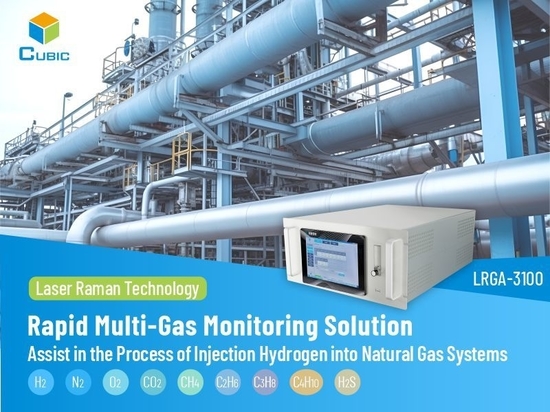
#Product Trends
Reliable Solution of Rapid Hydrogen Concentration Monitoring in Gas-fired Combustion Turbines
How Cubic Instruments Innovative Gas Analyzer Help Operators Maintain a Steady Level of Hydrogen-Natural Gas Ratio?
On May 11th, 2023, the U.S. Environmental Protection Agency (EPA) proposed new carbon pollution standards for coal and natural gas-fired power plants. The proposal would set limits for newly established gas-fired combustion turbines, existing coal, oil and gas-fired steam generating units, and certain existing gas-fired combustion turbines. For different types of turbines, EPA has listed different pathways for these engines to meet the standard of greenhouse gas (GHG) emissions reduction.
According to the proposal issued by the EPA, the content of “the co-firing of 30 percent (by volume) low-GHG hydrogen by 2032, and ramping up to 96 percent by volume low-GHG hydrogen by 2038” is one of the feasible pathways as potential best system of emissions reduction (BSER) to address greenhouse gas (GHG) emissions from new and reconstructed fossil fuel-fired combustion turbines and existing fossil fuel-fired stationary combustion turbines.
In respond with the trend of hydrogen as a green fuel in the U.S., retrofitting existing equipment, facilities, and infrastructure to utilize certain low level of hydrogen blended natural gas to generate electricity is a crucial transitional step towards carbon neutrality. Before the successful development and broad adoption of 100% hydrogen combustion turbines, employing mixed gas combustion stands as the most cost-effective and immediately practicable method. However, despite the low concentration of mixed hydrogen, co-firing hydrogen and natural gas still encounter the severe challenge of ensuring a stable ratio of mixed gases before entering the combustors. To ensure safe and stable operation at regulated temperature and pressure conditions, stringent demands are placed on the precision and steadiness of hydrogen concentration when blended with natural gas. Therefore, operators of gas-fired electricity generation units (EGU) should adopt advanced technologies that can accurately and continuously measure hydrogen concentration.
Cubic Instruments a leading manufacturer of gas analyzers, has leveraged Cubic mature technology platform of Laser Raman spectroscopy technology, and developed advancing gas analyzer, LRGA-3100, which is capable of rapid online measurement of multi-gas concentrations, including homonuclear diatomic molecule H2.
Based on Laser Raman spectroscopy technology, LRGA-3100 is specifically designed to address the challenges of rapid and simultaneous monitoring of multiple gases. It is capable of automatically providing online continuous measurement for all components of alkanes, such as CH4, C2H6, C3H8, C4H10 and so on, as well as homonuclear diatomic molecules, including H2, N2, O2, and more. In addition, LRGA-3100 excels in providing high-precision measurements with exceptionally low drift, ensuring reliable measurements for monitoring hydrogen and methane concentrations. Moreover, LRGA-3100 effectively mitigates the risk of measurement errors caused by manual operations, which could occur when applying traditional GC-MS methods. With its accurate and rapid gas measurements, LRGA-3100 empowers operators to promptly respond when hydrogen concentration approaches or exceeds allowable thresholds, ensuring the stability of the combustion process and maintaining safe operational standards.
Given its commendable performance and superior measurement capabilities, Cubic Instruments innovative Laser Raman gas analyzer, LRGA-3100, emerges as an ideal solution for hydrogen and natural gas concentrations monitoring in gas-fired combustion turbines. LRGA-3100 offers unprecedented efficiency, proving to be a valuable asset for the smooth function of industrial gas-fired combustion turbine systems.





